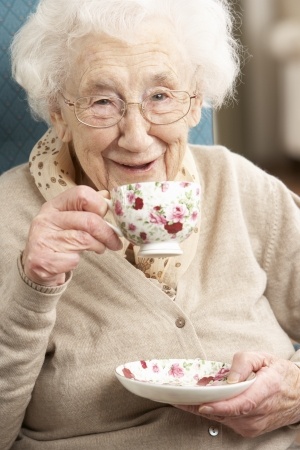Malnutrition And Dehydration
Dehydration and malnutrition may be life-threatening medical issues for the elderly and affect as many as two out of every five Care Home residents.
Malnutrition is not only not having enough food to eat; it can be caused by an unbalanced diet or the poor absorbtion of nutrients. Dehydration occurs when a person does not ingest enough liquids and fluid loss drops more than 3% of their normal body weight. It can occur because of a decrease in fluid intake, fever, diarrhoea or diuretic-type medication.
There are several reasons why there is a higher incidence of these conditions in Care Homes. Malnutrition can be the result of too few staff available to feed residents who are unable to eat on their own or the residents may suffer from Dysphagia (difficulty in swallowing), food digestion problems or mineral deficiency.
The elderly are at an increased risk of dehydration and malnutrition since they often fail to monitor their own intake of food and water and the Care Home staff may be too busy to notice.
A well-run nursing home should record what a resident eats and drinks. When Care Home staff do not chart liquid and food intakes, residents are at risk of becoming malnourished and dehydrated.
Dehydration is the most common cause of fluid and electrolyte disorders in frail, older people. Once dehydration sets in, other medical problems usually follow.
For example, dehydration is known to exacerbate dementia, weaken the immune system and slow healing of skin lesions, bedsores and body ulcers.
The elderly tend not to get enough fluid at the best of times. Advanced age is one of the major risk factors for dehydration. Persons between the ages of 85 and 99 years are six times more likely to be hospitalised for dehydration than the average population.
According to the Office Of National Statistics, more than 2,000 people have died as a result of malnutrition or dehydration since 2003.
Early Warning Signs of Dehydration and Malnutrition
Every individual needs a certain amount of fluid and nutrition to maintain health and life, especially the elderly.
Warning signs of malnutrition and dehydration are:
Sudden weight loss
Confusion and disorientation
Sores in the mouth and cracks around the lips
Dry skin
Sunken eyes
Dry mucus membranes
Fever and thirst

Health problems and injuries that may result from malnutrition and/or dehydration include:
Bedsores
Loss of muscle mass
Anaemia
Confusion and disorientation
Urinary tract infections
Pneumonia
A resident at risk of dehydration and malnutrition should have a program in place that includes assistance with eating and drinking, being offered fluids at mealtime as well as in-between meals and notifying a doctor if any these symptoms are present.
How MenuAnalyser Can HelpMenuAnalyser enables you to see at a glance the levels of nutrients that your residents are getting from the food that you are serving them. For example, you can ensure that they are receiving a sufficiently high calorie intake.
In addition, you can fine-tune your dishes in order to ensure that your residents are getting at the very least their Guideline Daily Allowance of essential vitamins and minerals.
In many cases of malnutrition, the reason can be traced to a zinc deficiency, which causes a loss of appetite and a reduced sense of smell. The loss of the olfactory senses means that food will be less appealing to your resident and therefore the motivation to eat disappears. In addition, a zinc deficiency may also contribute to an impaired immune function, which increases the risk of your resident contracting pneumonia and influenza. There may also be an increased incidence and severity of diarrhoea which will further exacerbate the dehydration.
In the case of a zinc deficiency, you can easily increase the amount of zinc-rich food in your resident's diet. Cereal, wheat germ have far and away the highest levels of zinc in any foodstuff. However, beef, pork and chicken have a relatively high zinc content as well as pop corn and parsley.